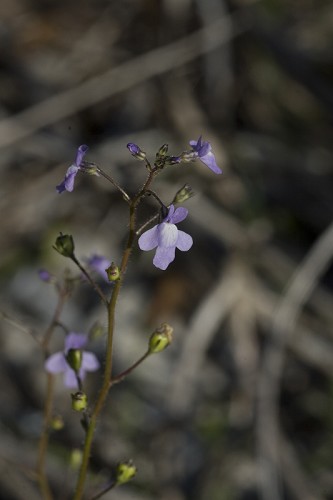Difference between revisions of "Nuttallanthus floridanus"
(→Photo Gallery) |
|||
| Line 55: | Line 55: | ||
==Photo Gallery== | ==Photo Gallery== | ||
<gallery widths=180px> | <gallery widths=180px> | ||
| − | File: Nutt_flor.jpg | <center> '' | + | File: Nutt_flor.jpg | <center> ''Nuttallanthus floridanus'' flowers <p> Photo by John R. Gwaltney, [http://www.southeasternflora.com/index.asp Southeastern Flora.com] |
| − | File:Nutta_floridanus_J-Gwaltney-SEFlora-Flower8727.jpg | <center> '' | + | File:Nutta_floridanus_J-Gwaltney-SEFlora-Flower8727.jpg | <center> ''Nuttallanthus floridanus'' flowers <p> Photo by John R. Gwaltney, [http://www.southeasternflora.com/index.asp Southeastern Flora.com] </gallery> |
==References and notes== | ==References and notes== | ||
Revision as of 10:05, 28 June 2016
| Nuttallanthus floridanus | |
|---|---|

| |
| Photo by John R. Gwaltney, Southeastern Flora.com | |
| Scientific classification | |
| Kingdom: | Plantae |
| Division: | Tracheophyta - Vascular plants |
| Class: | Magnoliopsida – Dicotyledons |
| Order: | Lamiales |
| Family: | Plantaginaceae |
| Genus: | Nuttallanthus |
| Species: | N. floridanus |
| Binomial name | |
| Nuttallanthus floridanus (Chapm.) D.A. Sutton | |

| |
| Natural range of Nuttallanthus floridanus from USDA NRCS Plants Database. | |
Common name: Apalachicola Toadflax
Contents
Taxonomic notes
Synonym: Linaria floridana Chapm.
The genus Nuttallanthus was separated from Linaria in 1988 by Sutton due to the floral and seed characteristics (Phillip and Elisens 2006).
Description
This species is an annual herb that produces bluish, bilabiate, and spurred flowers that attract a variety of insects (Phillip and Elisens 2006).
Distribution
N. floridanus is a narrowly distributed species occurring in the Atlantic and Gulf coastal plain in Alabama, Florida, Georgia, and Mississppi (Phillip and Elisens 2006).
Ecology
Habitat
Habitats include sparsely vegetated white sands along lakes, scrubs, sand dunes, and dry sandhills[1]. It has been observed growing in disturbed areas such as roadsides. Associated species include Krigia virginica and Crocanthemum (FSU Herbarium).
Phenology
Flowers and fruits in March (FSU Herbarium).
It is an autogamous species and produces both cleistogamous and chasmogamous flowers. The cleistogamous flowers are produced early and late in the life cycle and the chasmogamous flowers are self-pollinated before anthesis and attract insects after anthesis (Phillip and Elisens 2006).
Seed dispersal
The seeds are small and lack obvious dispersal mechanisms (Carrington 1997).
Seed bank and germination
Carrington (1997) found that germination depends on seeds accumulated in a persistent seed bank to maintain populations between disturbances.
Pollination
Pollen is required for fruit and seed development. It is completely cross-incompatible with other Nuttallanthus species due to the amount of genetic divergence between species and isolation (Phillip and Elisens 2006).
Conservation and management
Cultivation and restoration
Photo Gallery
Nuttallanthus floridanus flowers Photo by John R. Gwaltney, Southeastern Flora.com
Nuttallanthus floridanus flowers Photo by John R. Gwaltney, Southeastern Flora.com
References and notes
Carrington, M. E. (1997). "Soil Seed Bank Structure and Composition in Florida Sand Pine Scrub." American Midland Naturalist 137(1): 39-47.
Florida State University Robert K. Godfrey Herbarium database. URL: http://herbarium.bio.fsu.edu. Last accessed: February 2016. Collectors: Loran C. Anderson, Robert K. Godfrey, R. Kral, and Helen Roth. States and Counties: Florida: Franklin, Gadsden, Leon, Marion, and Wakulla.
Phillip, T. C. and W. J. Elisens (2006). "Genetic Variation and Reproductive System among North American Species of Nuttallanthus (Plantaginaceae)." American Journal of Botany 93(4): 582-591.

